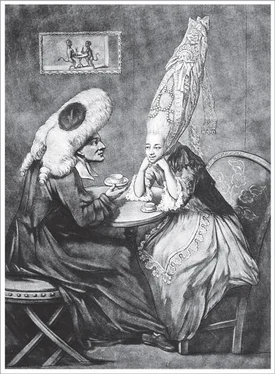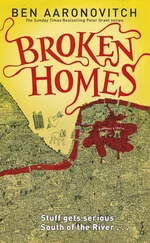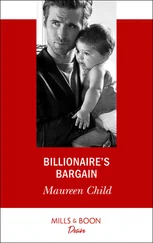Bill Bryson - At Home
Здесь есть возможность читать онлайн «Bill Bryson - At Home» весь текст электронной книги совершенно бесплатно (целиком полную версию без сокращений). В некоторых случаях можно слушать аудио, скачать через торрент в формате fb2 и присутствует краткое содержание. Жанр: Старинная литература, на английском языке. Описание произведения, (предисловие) а так же отзывы посетителей доступны на портале библиотеки ЛибКат.
- Название:At Home
- Автор:
- Жанр:
- Год:неизвестен
- ISBN:нет данных
- Рейтинг книги:4 / 5. Голосов: 1
-
Избранное:Добавить в избранное
- Отзывы:
-
Ваша оценка:
- 80
- 1
- 2
- 3
- 4
- 5
At Home: краткое содержание, описание и аннотация
Предлагаем к чтению аннотацию, описание, краткое содержание или предисловие (зависит от того, что написал сам автор книги «At Home»). Если вы не нашли необходимую информацию о книге — напишите в комментариях, мы постараемся отыскать её.
At Home — читать онлайн бесплатно полную книгу (весь текст) целиком
Ниже представлен текст книги, разбитый по страницам. Система сохранения места последней прочитанной страницы, позволяет с удобством читать онлайн бесплатно книгу «At Home», без необходимости каждый раз заново искать на чём Вы остановились. Поставьте закладку, и сможете в любой момент перейти на страницу, на которой закончили чтение.
Интервал:
Закладка:
Brick remained an eminently respectable material for the smartest homes right up into the Regency period, but then there suddenly arose a cold distaste for it, especially for red brick. “There is something harsh in the transition” from stone to brick, mused Isaac Ware in his highly influential Complete Body of Architecture (1756). Red brick, he went on, was “fiery and disagreeable to the eye … and most improper in the country”—the very place it was mostly being put to use.
Suddenly stone became the only acceptable material for the surface of a building. In the Georgian period stone was so fashionable that owners would go to almost any lengths to disguise the nature of their house if it wasn’t stone at all. Apsley House, at Hyde Park Corner in London, was built of brick but then encased in Bath stone when brick suddenly became unfashionable.
America played an indirect and unexpected role in brick’s falling fortunes. The loss of tax revenue from the American colonies after the American War of Independence, as well as the cost of paying for that war, meant that the British government urgently needed funds, and in 1784 it introduced a stiff brick tax. Manufacturers made bricks larger to reduce the impact of the tax, but these were so awkward to work with that the effect was to depress sales further. To counter this decline in revenue, the government raised the brick tax twice more, in 1794 and 1803. Brick went into a headlong retreat. Bricks were out of fashion and people couldn’t afford them anyway.
The problem was that a lot of the buildings already in existence were inescapably of brick. In Britain a simple expedient was to give the houses a kind of permanent facial by applying a creamy layer of stucco—a kind of exterior plaster compounded from lime, water, and cement, from the Old German stukki , or “covering”—over the original brick surface. As the stucco dried, lines could be neatly incised to make it look like blocks of stone. The Regency architect John Nash became especially associated with stucco, as a famous line of doggerel records:
But isn’t our Nash … a very great master?
He found us all brick and he leaves us all plaster!
Nash is yet another of the people in this story who rather came from out of nowhere, and his climb to greatness could not easily have been predicted. He grew up in grinding poverty in South London and was not a particularly imposing figure to behold. He had “a face like a monkey’s,” in the startlingly cruel description of a contemporary, and none of the breeding that could help smooth the way to success. But somehow he managed to land a plum traineeship in the office of Sir Robert Taylor, one of the leading architects of the day.
After completing his apprenticeship, he embarked on a career that showed more enterprise than triumphs, at least in its early days. In 1778, as a career-starting speculation he designed and built two groups of houses in Bloomsbury, which were among the very first (if not the very first) in London to be covered in stucco. Unfortunately, the world was not yet ready for stucco-clad houses, and they didn’t sell. (One of them remained empty for twelve years.) Such a setback would have been challenging enough in propitious circumstances, but in fact Nash’s private life was simultaneously unraveling in a rather spectacular manner. His young wife turned out to be not quite the catch he had hoped for. She ran up stupendous, unpayable bills at dressmakers and milliners all over London, and twice he found himself arrested for debt. Worse, he discovered that while he was extricating himself from these legal difficulties, she had been engaged in energetic frolics with others, including one of his oldest friends, and that the two children of his marriage were not in all likelihood his (and indeed may each have had a different father).
Bankrupted and presumably just a touch glum, Nash shed his wife and children—what became of them is unknown—and moved to Wales, where he built a new, less ambitious career and seemed poised to play out his life as a moderately successful architect of provincial town halls and other municipal structures.
And so his life passed for some years. But in 1797, at the clearly advanced age of forty-six, he returned to London, married a much younger woman, became a close friend of the Prince of Wales—the future King George IV—and embarked on one of the most important and influential architectural careers anyone has ever had. What accounted for these sudden changes has always been a mystery. The rumor, widely circulated, was that his new wife was the prince regent’s mistress and that Nash was merely a convenient cover. It is a not unreasonable presumption, for she was a real beauty and time had not made Nash any handsomer. He was, in his own words, a “thick, squat, dwarf figure, with round head, snub nose and little eyes.” But as an architect he was a wizard, and almost at once he began to produce a string of exceptionally bold and confident buildings. At Brighton he transformed a staid existing property known as the Marine Pavilion into the colorful domed fireworks of a building known as the Brighton Pavilion. But the real changes were in London.
No one, other than perhaps the Luftwaffe, has done more to change the look of London than John Nash did over the next thirty years. He created Regent’s Park and Regent Street and a good many of the streets and terraces around, which gave London a rather grand and imperial look that it had not had before. He built Oxford Circus and Piccadilly Circus. He created Buckingham Palace out of the lesser Buckingham House. He planned, though he did not live long enough to build, Trafalgar Square. And he covered almost every bit of everything he built with stucco.
II
Brick might have been permanently marginalized as a domestic building material but for one important, unexpected consideration: pollution. By the early Victorian era coal was being burned in England in positively prodigious quantities. A typical middle-class family could burn a ton a month, and nineteenth-century Britain suddenly had lots of middle-class families. By 1842, Britain was using two-thirds of all the coal produced in the Western world. In London the result was a near-impenetrable gloom through much of the year. In one of the Sherlock Holmes stories the detective has to strike a match—in daytime—to read something written on a London wall. So hard was it to find one’s way that people not infrequently walked into walls or tumbled into unseen voids. In one famous incident, seven people in a row fell into the Thames, one after the other. In 1854, when Joseph Paxton suggested building an eleven-mile-long “Grand Girdle Railway” to link all the principal railway termini in London, he proposed to build it under glass so that passengers would be insulated from London’s unwholesome air. It was more desirable evidently to be inside with the thick smoke of trains than outside with the thick smoke of everything else.*
Coal was hard on practically everything—on clothes, paintings, plants, furniture, books, buildings, and respiratory systems. During weeks of really bad fog, the number of recorded deaths in London could easily increase by a thousand. Even pets and animals at the Smithfield meat market died in disproportionately increased numbers.
Coal smoke was particularly hard on stone buildings. Structures that looked radiant when new often deteriorated with alarming swiftness. Portland stone took on a disturbing piebald appearance, assuming a brilliant whiteness on every face that was exposed to winds and rain, but becoming a filthy black under every sill, lintel, and sheltered corner. At Buckingham Palace, Nash employed Bath stone because he thought it would wear better; he was wrong. Almost immediately it began to crumble. A new architect, Edward Blore, was brought in to fix the building. He enclosed Nash’s courtyard with a new frontage built out of Caen stone. It, too, began to fall apart almost at once. Most alarming of all were the new Houses of Parliament, where the stone began to blacken and develop shocking pits and gouges, as if raked with gunfire, even while the building was going up. Desperate remedies were attempted to halt the deterioration. Various combinations of gums, resins, linseed oil, and beeswax were painted onto the surface, but these either did nothing or produced new and even more alarming stains.
Читать дальшеИнтервал:
Закладка:
Похожие книги на «At Home»
Представляем Вашему вниманию похожие книги на «At Home» списком для выбора. Мы отобрали схожую по названию и смыслу литературу в надежде предоставить читателям больше вариантов отыскать новые, интересные, ещё непрочитанные произведения.
Обсуждение, отзывы о книге «At Home» и просто собственные мнения читателей. Оставьте ваши комментарии, напишите, что Вы думаете о произведении, его смысле или главных героях. Укажите что конкретно понравилось, а что нет, и почему Вы так считаете.












